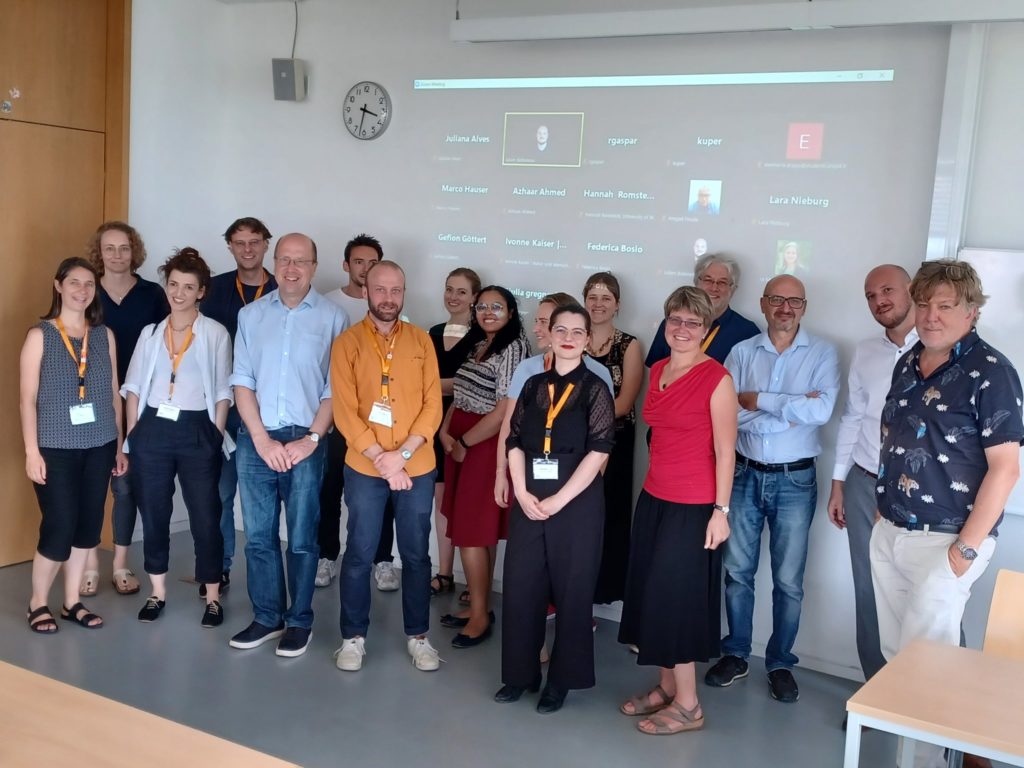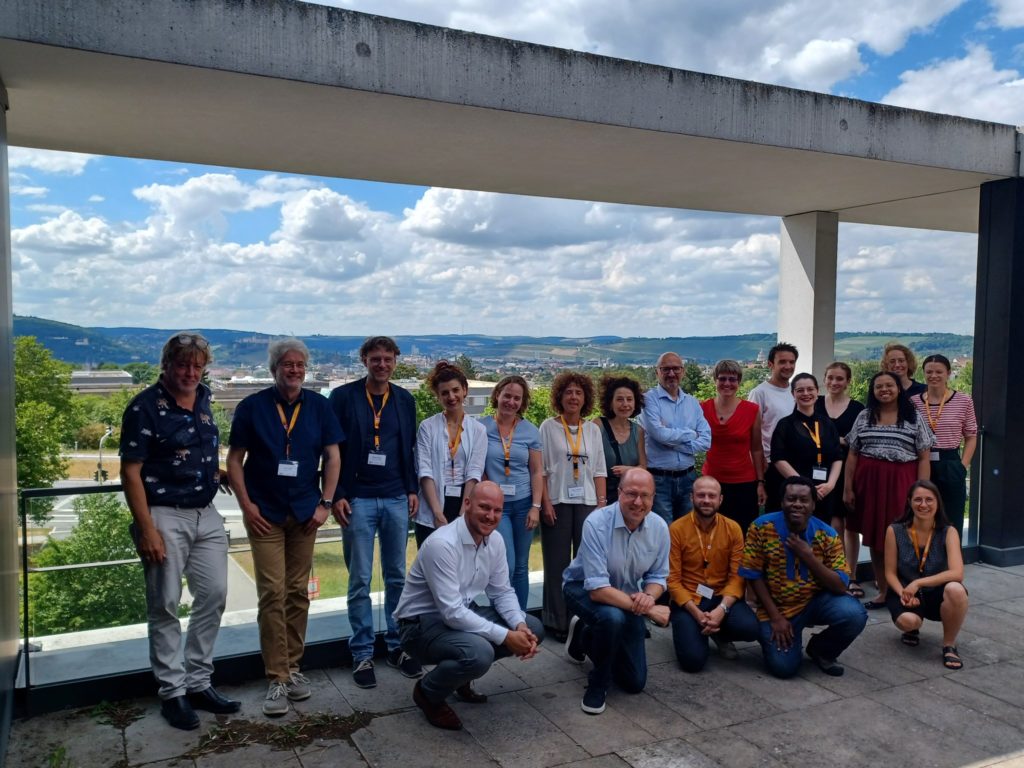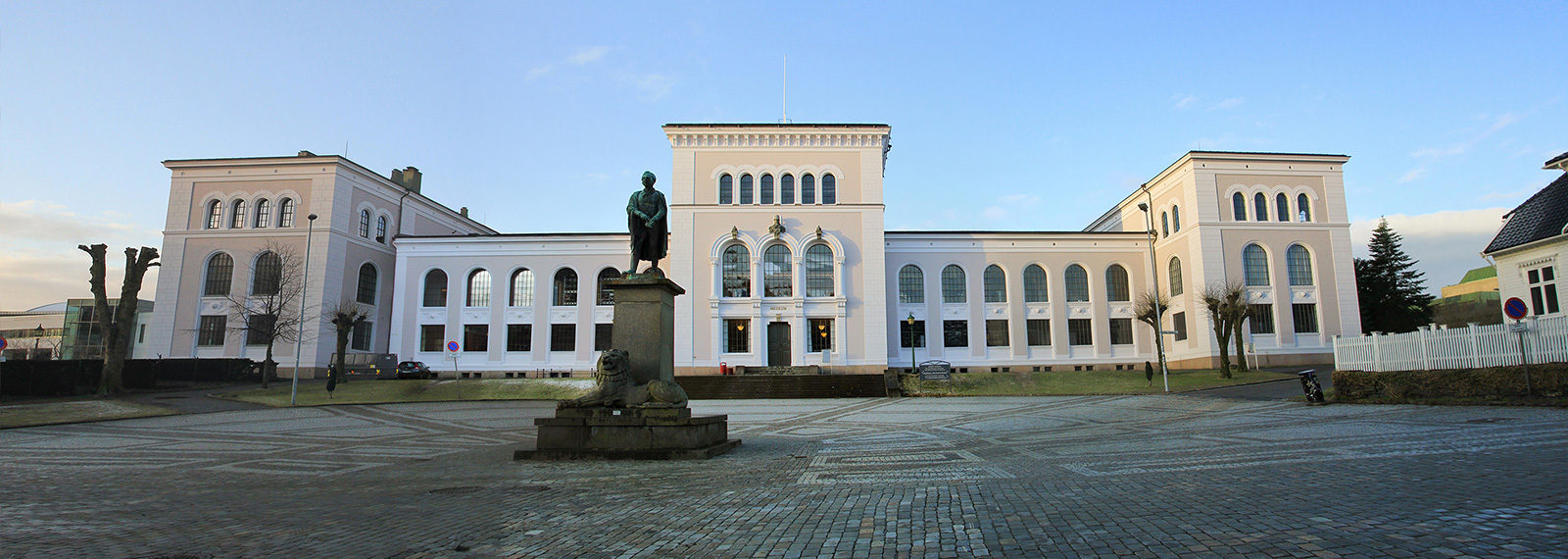Colonized Objects and Bodies in Europe: New challenges and new perspectives on the Decolonization of Cultural Heritage
28 June 2022
Giuliana Tomasella (University of Padova) & Julien Bobineau (University of Würzburg)
A joint initiative of the Coimbra Group Working Groups on Heritage and Development Cooperation, the conference “Colonized Objects and Bodies in Europe: New challenges and new perspectives on the Decolonization of Cultural Heritage”, took place at the University of Würzburg (Germany) on 24 and 25 June.
In both the ex-colonial and the ex-colonized worlds, visions of Africa and its colonial past have become incarcerated in stereotypes, dichotomies, and historical misrepresentation. Especially in European Cultural Heritage, we see a mixture of these ambivalent subjects and habits of lack of self-searching. But the restitution debate in Europe on cultural objects from Africa (Sarr/Savoy 2018) and the Black Lives Matter movement, which also reached Europe in 2020, have set the course for a questioning of the colonial essence of Cultural Heritage. Recent questions about history politics, cultural memory and cultural traditions are now also – and above all – debated in public. Museums, Cultural Heritage institutions, Universities with their collections and their self-image are now more than ever in the spotlight of the dynamics of a global debate.
During the conference, the following questions were discussed: How can Cultural Heritage be decolonized in science, society, politics and institutions in order to avoid ideological extremism? Are there national differences and similarities in Europe? Who are the actors and networks involved in defending the status quo or in decolonizing Cultural Heritage’? What are the direct and indirect consequences of unreflect and stereotypical Cultural Heritage in Europe? How can the ‘decolonialization of Cultural Heritage’ contribute to the field of development cooperation with the African continent?
The conference was organized by Giuliana Tomasella (University of Padova) and Julien Bobineau (University of Würzburg) under the umbrella of the Coimbra Group, an association of long-established European multidisciplinary universities of high international standard.

Friday, 24th of June 2022
The conference began with two talks on two large national museums with problematic pasts: the AfricaMuseum in Tervuren and the Museo delle Civiltà in Rome which houses the collections of the former colonial museum. In the case of Tervuren, as pointed out by Georgi Verbeek’s (Maastricht University/University of Leuven) exposition, the transformation began in 2013 and ended in 2018. Verbeek provided the historical background, which is essential for understanding the genesis but also the development of the institution as a museum “frozen in time” that has now been radically transformed. The case of Rome is quite different as Gaia Delpino (Museo delle Civiltà Rome) showed: the colonial collections as such, that is, the objects from the lands of the former empire of Italian Africa, were hidden in the museum’s storerooms for decades and are only now re-emerging.
Guido Fackler’s (University of Würzburg) dense talk condensed some of the key themes in the contemporary museological debate also involved in the national museums mentioned previously. Some of his proposals and examples concern participatory strategies and new conceptual approaches that must be implemented at various levels, including the curatorial, exhibition design, and didactics. These strategies represent some of the paths taken by the curators of many museums throughout Germany and the curators of the former Colonial Museum in Rome.
Dealing with such problematic artefacts led them to attempt new approaches and experiments in a variety of ways. During the discussions, the audience truly appreciated that they are fully aware there is no single, correct solution; scholars and practitioners can only humbly continue to study and reflect, knowing that the old idea of ethnographic museums no longer exists. The experiment of open storage is fascinating in two respects: on the one hand, they give scholars full access to the repositories (and this enhances study); on the other hand, they propose a display of the artefacts that preserves the in-progress, unfinished set-up of stored collections.
Other essential practices, which are carried out in many contemporary ethnographic museums, concern involvement and dialogue with the so-called communities of origin; and, again, the participation of contemporary artists, both European and African, who are called on to reinterpret and examine the works kept in museums. In today’s museums, a multi-voiced approach is desired and – as Fackler pointed out – necessary to achieve the most effective communication strategies to reach the visitor.
There are states and museums directly involved in the so-called ‘Scramble for Africa’, but different stories emerge in the case of Austria or the Czech Republic. In those cases, individual explorers or collectors amassed objects that later became part of important public museums. And through those collections, as Bernadette Biedermann (University of Graz) has shown, both the identity of the museums such as the Weltmuseum Wien and the nation’s self-image were defined. The legacy of the former Austro-Hungarian empire is powerful, and Bernadette has showed that the old Cabinets of Curiosity are also involved in the construction of the national identity.
Marketa Krizova’s (Charles University) investigation of Emily Holub’s story reconnects to the former Austro-Hungary empire. As “Czech Livingstone”, Holub amassed natural and ethnographic collections during his journeys in Africa in the second half of the 19th century that are now scattered around different European and North American museums. This story is significant because it leads to the core of the crucial question of provenance research. It will be very interesting to connect the different bodies of Holub’s collection and, for example, create a virtual itinerary through her objects within the various museums. But, in addition to this, Marketa introduced another question: the second life of Holub during the Cold War. An investigation into this time, straddling the postcolonial period and the Soviet Union, is rarely considered in the postcolonial debate.
Speaking of little-debated topics, the organizers underlined one aspect that emerges from the study of Beatrice Falcucci (University of L’Aquila): the presence, alongside the ‘classic’ ethnographic collections, of botanical, mineralogical and zoological collections. We know that naturalistic specimens were present, often in large numbers, in the many colonial exhibitions that took place all over Europe. Entire sections were devoted to the possibilities of economic exploitation of various kinds: mining, agriculture, etc. Individual scholars or explorers were sent to Africa to carry on this kind of study, including university professors at times. This should encourage researchers to explore the ‘dark side’ of the history of universities concerning their involvement in the colonial process.
The topic of exhibitions was addressed by Nuno Coelho, Alexandra Balona and Melissa Rodrigues (University of Coimbra)) who presented a highly significant case study with a diachronic approach. In the first Portuguese Colonial Exhibition of 1934, we find the typical structure of colonial exhibitions with natural specimens, features, attractions, and the inevitable human zoo: the recreation of a so-called indigenous village populated by hundreds of people. As a mascot, the large sculpture of an elephant was made, later reproduced in decorative art objects. From this mascot, the scholars presented a program that aims to critically revisit the very space in which the exhibition took place. Many artists, activists, scholars, and students have been invited to discuss and bring back to the surface a forgotten exhibition in which the myth of the “good colonizer” was perpetuated, which is also known well for other European countries. For too long we have indulged in this illusion. And unfortunately, it is still not over.

Saturday, 25th of June 2022
During the conference’s second day, the topic of contemporary art was addressed in Marta Nezzo’s and Priscilla Manfren’s (both University of Padova) highly original approach. The case of Harmonia Rosales is symptomatic: the European (or we could say globalized) gaze immediately led us to what we consider the fundamental matrix of the painting – Botticelli’s Primavera and Nascita di Venere, paintings that have been reproduced millions of times and which immediately bring to mind Walter Benjamin’s essay on Work of Art in the Age of Mechanical Reproduction. Both presenters raised the question of how to decolonize the European gaze. One answer could be to overcome the first filter, the obvious, of Italian art and go beyond it; recover the African and Cuban traditions that allow us to see the complexity and stratification of meanings, religions and cultures. We are not used to coming to terms with other cultures: the Orishà of the Yoruba tradition and the Santeria of Cuba. Decolonizing the European gaze is difficult; it implies effort. It challenges us by showing our reluctance to consider what is outside our tradition.
Another crucial theme addressed was that of restitutions: they imply provenance research. Yann LeGall (Technical University of Berlin) presented an interesting case where a theme discussed the first day returned: the myth of the “good colonizer”. In this case, LeGall showed the example of the “model colony” (allegedly) in German Togo. Research on the ethnographic collections of no less than seven German museums has led to the identification of some so-called collectors who amassed many objects resulting from punitive expeditions. For all intents and purposes, these are spoils of war and, therefore, this is the story of looting. This study, carried out in collaboration with the University of Ghana, has made it possible to reconstruct the number of people killed. As the author said, the research paved the way for restitution and shows the importance of the crossover between the observation of the objects, the history of the protagonists, and the archive data connected to both. It also shed light on the responsibility of the museums that not only bought the spoils of war but sometimes commissioned the expeditions to obtain them.
Elise Pape and Aggée Lomo (both University of Strasbourg) talked again about restitution. Their report brought up an issue that often emerges when talking about restitutions: the relationship between Nazis and colonial lootings. Recognition of Nazi crimes came first and, to some extent, drove the issue of colonial restitution by analogy or contrast. This case deals with numerous human remains from former German colonies (between the 19th and 20th centuries) now kept at the University of Strasbourg. They were collected by a physician, Theodor Berké, in an area of the German colonies. The authors propose new approaches and proactive policies between the communities of origin and the institutions involved. The investigation sheds light on the origin and possible identification of the people and raises essential religious issues. Aggée has underlined that the loss of skulls consists of the loss of a symbolic dimension and ancestors.
Jonathan Kurzwelly’s (University of Göttingen) paper highlighted some problems associated with the restitution of human remains and has many links with the previous one. In dealing with human remains, it is necessary to consider the associated spiritual aspects for some communities of origin, while in Europe, we tend to consider them from a purely scientific point of view. The reference to Johann Friedrich Blumenbach (1752-1840) is very important as he was an influential anthropologist. According to Blumenbach, Africans were not inferior to the rest of humankind in terms of the faculties of understanding, natural talents and mental capacities. Nonetheless, his taxonomy promoted and spread the idea of a hierarchy between the different “races”. According to Kurzwelly, even today’s physical anthropologists with the best intentions perpetuate the essentialism of the 19th century matrix. The risk is to continue legitimizing division into nationalities (which evokes different species) when what matters is the individuality and history of the individual colonized bodies, which is often violated both alive and dead.
Massimo Zaccaria (University of Pavia) addressed the issue of books, newspapers, and flyers published in Africa, introducing the question of the necessary involvement of our African counterparts. The case study is that of Eritrea, a pilot project that provides us with a positive example of collaboration between African and European research institutions. As the studies develop, we see that there are vast grey areas and we discover what we had not been aware of before; that is, we are surrounded by memories and traces of the colonial wars. In the same way, we realize we need to revise the languages of databases to carefully consider whether and how to repropose audiovisual documents as Emily Hansell Clark (Vrije Universiteit Amsterdam) underlined it; to update the language of databases, which is based on old captions and records with vocabulary affected by the colonialist perspective: this is the case of the databases of the Natural History and Science Museum of the University of Porto that Rita Gaspar and Juliana Alves (both University of Porto) have analyzed. So, definitely: also words matter.
In the rich examination of the wide variety of exhibits, the interesting case of the music automata and the comparative analysis of their display in two different museums was shown: the Museum Speelklok in Utrecht and the Musée de la musique mécanique in Les Gets. Dianta Vlet and Claire McGinn (both Utrecht University) have observed that, despite the diverse nature of the two museums (one quite famous and well organized, the other entrusted to volunteers), there is still not enough attention paid to these problematic objects. The memorial character of the museum in Les Gets and the joyful atmosphere of Museum Speelklok seem to be an obstacle to any engagement.


